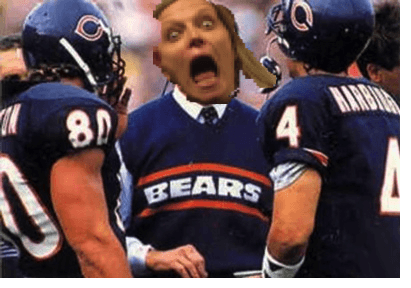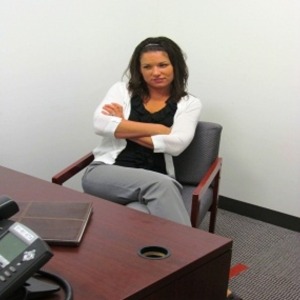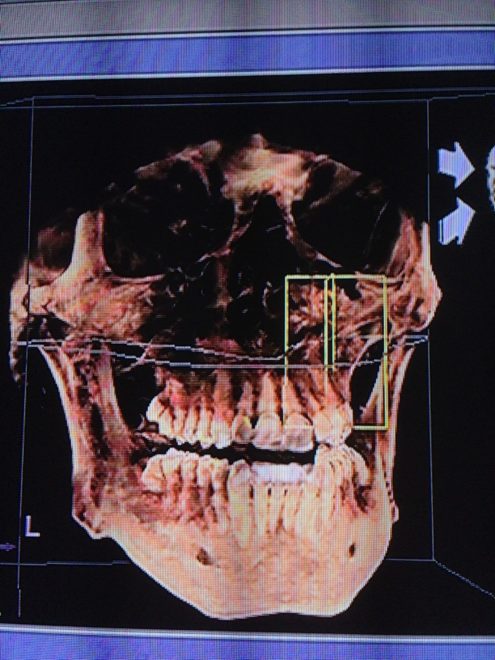When I think About You… Prompted by some mentee questions and blog comments, I wondered where manual therapy fits in the rehab process. To satisfy my curiosity, I calculated how much time I spend performing manual interventions. Looking at last month’s patient numbers to acquire data, I found these numbers based on billing one patient every 45 minutes (subtracting out evals and reassessments): Nonmanual (including exercise and education) = 80% Manual = 20% Modalities = 0%!!!!!!!!!!!! Delving a bit further, here’s my time spent using PRI manual techniques versus my other manual therapy skill-set: PRI manual = 14% Other manual = 6% As you can see, I use manual therapy a ridiculously low amount; skills that I used to employ liberally with decent success There’s a reason for the shift I want my patients to independently improve at all cost and as quickly as possible. The learning process is the critical piece needed to create necessary neuroplastic change; and consequently a successful rehab program. Rarely is learning involved in manual therapy.
Read MoreCategory: All Things Rehab
Course Notes: Spinal Manipulation Institute’s Dry Needling 1
You Mean Zac Didn’t go to a PRI Course? Yes. From time to time I occasionally take a gander at what else is out there in PT land. It was probably about time I check out this whole dry needling thing and see what the fuss is about. I took the Spinal Manipulation Institute’s version based on some recommendations from a few colleagues I trust. Ray Butts was MC’ing for the weekend. I know needling is quite the controversial topic, but I was amazed at the sheer quantity of evidence supporting this modality. Like, an insane amount. I am not sure what the “haterz” found their criticisms on, so please comment if you have some ammo (I am a noob to this after all). And Ray’s lecture on dry needling mechanisms? Oooohhh lawwwwd. Easily one of the best foundational science lectures I have ever heard. Period. The passion this group has not only for science but the physical therapy profession is inspiring. They made me excited to be a PT. Perhaps even inspired me to contemplate the PhD route. All that said, I am unsure as to where needling will fit into my practice. The assessment that would point you toward needling someone was sorely lacking. I’ve noticed this problem to be quite common in manual therapy courses. It’s pretty much you hurt here/have this diagnosis, then use this protocol.
Read MoreSmooth Talker: Nonthreatening PRI Patient Education
I recently had the pleasure and honor of speaking at the annual PRC conference at this past weekend’s Interdisciplinary Integration. I happened to have my younger older brother Connor Ryan record the event. We unfortunately had some technical difficulties, so a few bits are missing. But you’ll get the gist from the videos below. Enjoy! Smooth Talker handout
Read MoreThe Road to an Alternating and Reciprocal Warrior: You down with ENT?
This spans an entire treatment over a year’s time. Here’s part 1 Part 2 Part 3 Part 4 “Yeah you know me.” ~ Naughty By Nature You know how sometimes when you are treating someone that individual eventually reveals fairly important information that he or she forgot about. Yeah that was totally me. I’ve always had a stuffy nose as far back as I can remember; especially in the winter. The only time breathing felt incredibly easy was when I was eating paleo in college. I have progressively been losing my sense of smell as well. Must be old age right? When I spoke with Lori Thomsen about my recent experience, she mentioned at Pelvis that attaining neutrality in certain areas but not others could lead to a “pressure cooker” phenomenon. For example, if I have someone with a neutral neck and thorax, lower extremity symptoms may possibly be more common. In my case, I had a neutral pelvis at the time my wisdom teeth were pulled. Pull out wisdom teeth and my nasal airway goes crazy. Guess where the pressure went? It was time to see an ENT. ENT Begins After viewing my CT scan and airway, my ENT concluded I have patho-scoliosis. More specifically, airway scoliosis. He found a deviated septum and some enlarged turbinates. These two factors could have a large impact on my breathing capabilities. To me this made a lot of sense. If you read this article, a nostril will drive air to the ipsilateral lung.
Read More
Course Notes: Pelvis Restoration Reflections
Pelvises Were Restored It was another great PRI weekend and I was fortunate enough to host the hilarious Lori Thomsen to teach her baby, Pelvis Restoration. Lori is a very good friend of mine, and we happened to have two of our mentees at the course as well. Needless to say it was a fun family get-together. Lori was absolutely on fire this weekend clearing up concepts for me and she aptly applied the PRI principles on multiple levels. She has a very systematic approach to the course, and is a great person to learn from, especially if you are a PRI noob. Here were some of the big concepts I shall reflect on. If you want the entire course lowdown, read the first time I took the course here. Extension = Closing Multiple Systems This right here is for you nerve heads. It turns out the pelvis is an incredibly neurologically rich area. What happens if a drive my pelvis into a position of extension for a prolonged period of time? I’ve written a lot about how Shacklock teaches closing and opening dysfunctions with the nervous system. An extended position here over time would increase tension brought along the pelvic nerves. Increased tension = decreased bloodflow = sensitivity. We can’t just limit it to nerves however, the same would occur in the vasculature and lymphatic system. We get stagnation of many vessels. Perhaps we need to think of extension as system closure; a system closing problem. Flexion will be
Read More
Recognizing and Changing Nonverbal Communication Disorders: An Interaction Approach
I was at my local coffee shop the other day chatting with my barista as she prepared my drink. Once it was all said and done and I paid, she wished that I had a glorious day. Glorious is not a word you hear often and definitely caught me ear. You might even say it was salient! I have this thing when someone uses an uncommon descriptor. When this occurs, I typically try to use an even more ridiculous descriptor. I especially like to apply this method to wish someone a better day than I. For example: Joe Blow: “You have a good day.” Me: “You have an even better day.” Glorious is a bit more difficult to top, but in the blink of an eye I was able to respond: “You have a splendiferous day.” Stupid? Yes. Did I get a laugh and a smile? Absolutely. Me doing this silly little thing with people is irrelevant. What is relevant is the speed that I was able to apply this quip. I spouted this word quickly because it fit a common pattern. Pattern recognition is huge in athleticism, medicine, and a multitude of other life facets. But how often do we think of pattern recognition when we interact with individuals? Being able to differentiate what both verbal and nonverbal communication one uses is critical in ensuring a favorable interaction with someone. And if your patient or client doesn’t like you? Fugetaboutit. Let’s look at a very common pattern that if you allow
Read More
The Road to an Alternating and Reciprocal Warrior: Wisdom Teeth Extraction
This spans an entire treatment over a year’s time. Here’s part 1 Part 2 Part 3 The Saga Continues I’ve been through vision, I’ve had dental integration, I’ve put in the PRI activity homework, maximized my PRI testing, and feel a new man. Yet neutrality eludes me. It is a state of mind I could once feel by the power of glasses and splints, but the nervous system learns and accommodates. I topped out. But of course, I knew that would be the case from my very first session with Ron. “You gotta get those wisdom teeth pulled.” ~Ron Hruska By virtue of the dentist I integrate with, the time came. And here are the results. Zac B.E. (Before Extraction) So at this point in my life the large HRV gains I initially had were dropping and I was still having some neck tension. Training was feeling so-so. Test-wise, the videos below show what I look like. Here’s my squat And my toe touch. Upper quadrant tests And lower quadrant tests Mandibular movements And some cervical movements My pelvis is consistently neutral and I can shift and squat with the best of ‘em. But I still present with restrictions in my thorax, neck, and mandible (BBC/RTMCC). These limitations are likely present because of a bony block called wisdom teeth. As you can see, the maxillary (top side) wisdom teeth limit the excurision of my lateral pterygoids for lateral trusive movements. My hope is by removing these guys I will get
Read More9 weeks with Bane, I mean Zac…Oops Sorry Wrong CI
Note from Zac: This is my first guest post, and to start things up is the one and only Trevor Rappa. Trevor was my intern for the past 9 weeks and he absolutely killed it. Here is his story. It’s very exciting for me to get to write a guest post for Zac’s blog that I have read so many times and learned so much from. The experience I have had with him over these past 9 weeks has been incredible and I hope to share some of it with all of you that read this. He challenged me to think critically in every aspect of patient interaction: how I first greet them, which side of them I sit on, the words I use, and how I explain to the patient why I chose the exercises they’ll go home with. All of this was to create a non-threatening environment to help to patient achieve the best results they can. He also taught me how to educate patients with a TNE approach, incorporate other interventions such as mirror therapy into a PRI based treatment model, and deepened my understanding of the neurologic concepts behind performance. Therapeutic Neuroscience Education Perception of threat can lead to a painful experience which will cause a change in behavior. It’s the PT’s role to introduce a salient stimulus to attenuate the perception of threat in order to cause a positive change in experience and behavior (Zac and I came up with that, I really like it). Pain
Read MorePost 100: Sexifying Upper Quadrant Post-Op
I Wrote a Lot It’s interesting to think how much this blog has changed since I started writing in February 2013. We’ve gone from cliff notes of books, to cliff notes of courses, to the occasional self-musing. While I still plan on reviewing and assimilating courses I take, my hope is to expand and reflect upon whatever is in my brain a smidge more. It makes sense to start this trend with post 100. And today, postoperative care is piquing my interest. Yes, post-op intervention is a guilty pleasure of mine. And it’s not because it’s easy. Far from easy. Post op treatment gives you a license to create under various constraints. Meaning you have to dig a little deeper to achieve desired goals. I think it can be way sexier, and effective, than your typical post-op protocol BS. So let’s create some successful post-op fun. The First Constraint Before we even talk about specific patients, we have to first look at the largest constraint yet: available tools. At my current digs, I don’t have much of anything in terms of heavyweights. So here is what I have at my disposal that I can implement: 1-on-1 care for 60 minutes Kettlebells: 10, 15, 25 pounds Therabands and theratubes of various sizes Cook bands of various resistances PRI trial orthotics (mouth splints, arch supports, reading glasses, yada) Steps Tape IPAD 3D stretch cage (aka very expensive equipment to tie therabands to) Access to higher level brain centers Heart of gold
Read MoreCourse Notes: Dermoneuromodulation
What? You Mean You Have to Touch Someone???!!?!? My gluttony for punishment continues. This time, I had the pleasure of learning Diane Jacobs’ manual therapy approach called Dermoneuromodulation (DNM). My travels took me to Entropy Physiotherapy and Wellness in the Windy City. These folks were arguably the best course hosts I have ever had. We had lunch!!!! Both days!!!!! That is unheard of, so a big thanks to Sandy and Sarah for putting the course together. I took DNM out of curiosity. I have been lurking around Somasimple on and off for the past couple years, and wanted to learn more about the methods championed there. Believe it or not, I have yet to take a pure manual therapy course, DNM seemed like a great way to get my hands dirty. That darn PRI has lessened the hand representation in my somatosensory homunculus! One reason I haven’t taken a manual course is due to the explanatory models many classes are presenting. It seems as though few are approaching things with a neurological mindset, but I was pleased to hear Diane’s model. It is the best explanation I have heard yet. I know that I usually list my favorite quotes at the end of the blog, but I wanted to share the best quote of the weekend right off the bat: “I don’t know why.” I heard this phrase so much throughout the course and it was quite refreshing. Diane made few claims about her technique, admitted who she “stole” from,
Read MoreMovement Chapter 13: Movement Pattern Corrections
This is a chapter 13 summary of the book “Movement” by Gray Cook. Back to the Basics Mobility deficits ought to be the first impairment corrected. Optimizing mobility creates potential for new sensory input and motor adaptation, but does not guarantee quality movement. This is where stability training comes in. In order for the brain to create stability in a region, the following ought to be present: Structural stability: Pain-free structures without significant damage, deficiency, or deformity. Sensory integrity: Uncompromised reception/integration of sensory input. Motor integrity: Uncompromised activation/reinforcement of motor output. Freedom of movement: Perform in functional range and achieve end-range. Getting Mobility There are 3 ways to gain mobility: 1) Passively: Self-static stretching with good breathing; manual passive mobilization. 2) Actively: Dynamic stretching, PNF. 3) Assistive: Helping with quality or quantity, aquatics, resistance. Getting Stability In order to own our new mobility, we use various stability progressions to cement the new patterns. There are three tiers in which stability is trained: 1) Fundamental stability – Basic motor control, often in early postures such as supine, prone, or rolling. 2) Static stability – done when rolling is okay but stability is compromised in more advanced postures. 3) Dynamic stability – Advanced movement. We progress in these stability frames from easy to further difficult challenges. Assisted → active → reactive-facilitation/perturbations Since stability is a subconscious process, we utilize postures that can challenge this ability while achieving desired motor behavior. We can also group the various postural progressions into 3 categories: 1)
Read MoreLessons from a Student: The Interaction
The Inspiration Over the past few weeks I have felt called to write about an often uncovered yet extremely important component of the therapeutic process: Patient interaction. We had an instance in which I came back into the clinic from my lunch break and my intern was supposed to have a patient evaluation. Instead, she opted to have me take this particular patient. This patient was a lovely 17 year old lady who was being seen for bilateral foot pain. This was her second bout of therapy, and her and her mother was very dissatisfied with their last physical therapy experience just a few months (and 17 visits) prior. She was not a happy camper and wanted a second opinion. After hearing stories from my coworkers, I expected the worst. We progress through the evaluation, and my student observes nothing but smiles throughout from the patient and her mom. Jokes were cracked, movement was looked at, and edumacation happened. At this point, after a little explain pain and kinetic chain discussion, these women were sold. We leave the treatment room and I said “that wasn’t so bad yes?” My student replies “that’s because they are in love with you.” But really, that essentially is what you have to do with the patient interaction. You can have the greatest hands, the greatest exercise plan, and evidence up the wazoo; but if your patient hates your guts you will fail. I heard this from Patrick Ward that 80% of your success with
Read More